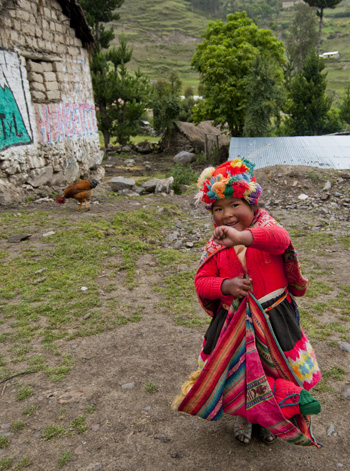Laid back in Ollantaytambo
Ollantaytambo sits in the Sacred Valley, northwest of Cuzco and is known for its ruins and its train station. You see this is the place most travelers to Machu Picchu go through, climbing on the train that will take them to Aguas Calientes and the bus to the famous ruins. It’s the place that the Camino Inca treks often stop for breakfast before hitting the trails into the mountains. I came here because it was (supposed to be) a quiet little town and because I am determined to go back to Machu Picchu and see the place as I didn’t see it before.
The town of Ollanta (as it is known to the locals) is apparently the best surviving example of Inca town planning available today.
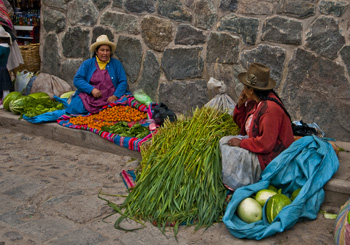
Leave the Plaza de Armas and turn towards the ruins on the mountain, and the streets are narrow, cobbled and have irrigation channels running down the sides. Stone walls are crowned with cactus in a traditional alternative to barbed wire and broken glass and each house sports twin bulls on their ridgepole – the result of the Spanish saying a bull was more appropriate than the Inca symbol of the ‘puma’.
You can tell this town wasn’t built in this century by the way the traffic congests every time more than two cars get on the road together. Now picture a town converged on by tour busses, taxis, moto-taxis and the occasional semi, all trying to squeeze across a single-lane bridge and I swear entertainment in Ollanta is sitting under the lone tree in the Plaza and watching the mess reconfigure itself again and again in a kaleidoscope of vehicles.
Unfortunately I didn’t get to see as much of the town as I would have liked, because both my ankles are still crippled from the Machu Picchu hike, but I did try to get out daily and finagled my way along (between naps – hey, recovering here) as the lone tourist with a local association devoted to preserving the weaving arts in small villages up in the mountains.
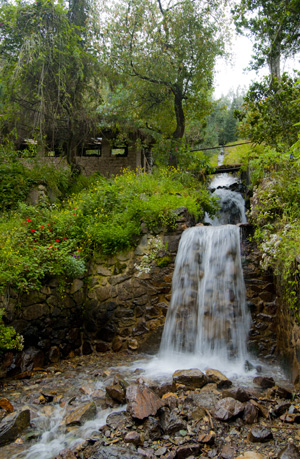
We drove out in the morning, heading up a dirt road that stretched back into the mountains. The road rose, switching back and forth across the mountain sides following a small rushing river, the Patacancha, that was joined by innumerable glacier-fed torrents that foamed down the mountainsides. Green Inca terraces, some the longest in Peru, an old stucco church with thatch roof that I was told is one of the oldest in South America. There were donkeys and pigs and sheep and trains of pack horses headed up the mountain and views of people harvesting their papa (potatoes) laboriously by hand.
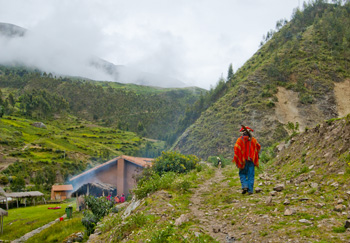
But best of all are the people. Not only are the people of Ollanta and environs friendly (they always have a smile, especially if you have one first), but this is a town where tradition has not yet been erased by globalization. Men and women both proudly wear their traditional clothing.
Nowhere was this more clear than in the small weaving town of Patacancha and the towns around it. As we drove in we could see the men in the school yard, bright orange and red clothing against the green.
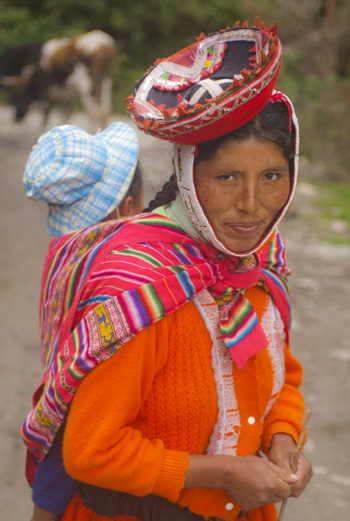
At the weaver’s cooperative, there were 36 women dressed proudly in their heavy skirts, hand-woven button-embellished jackets, and small hats held on by beaded chin straps. According to my informant, these villagers are not seeing their young men and women leave the village and that seemed the case looking at the ages of the women in the group.
So the coop bought the women’s weavings and I took photos while we sat on a hill side under thatched huts and blue skies with the sound of the wind in the eucalyptus and the river running. Taking it all in, I didn’t feel bad that I couldn’t walk much.
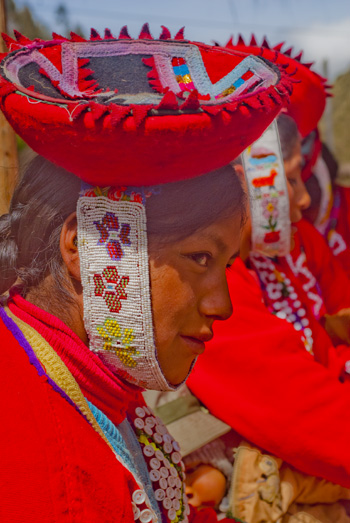
Here in Ollanta, the culture and the past still lives and breathes and, if you sit quietly in the Plaza de Armas, both will pass you by – along with the traffic.
